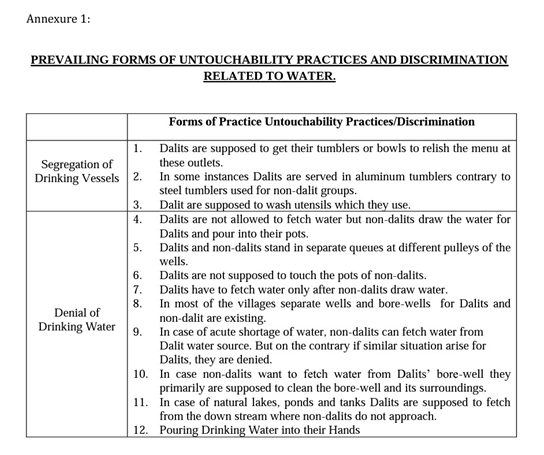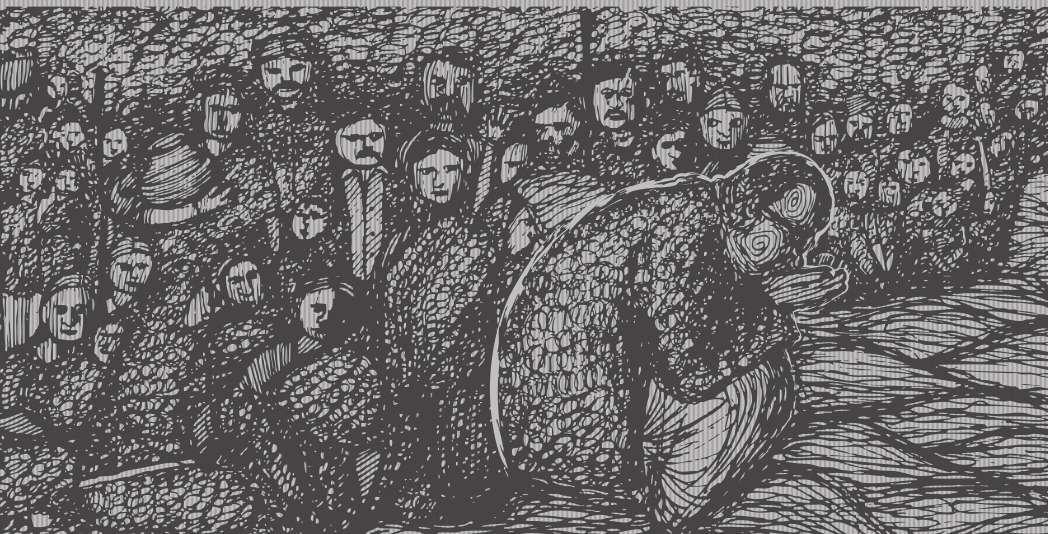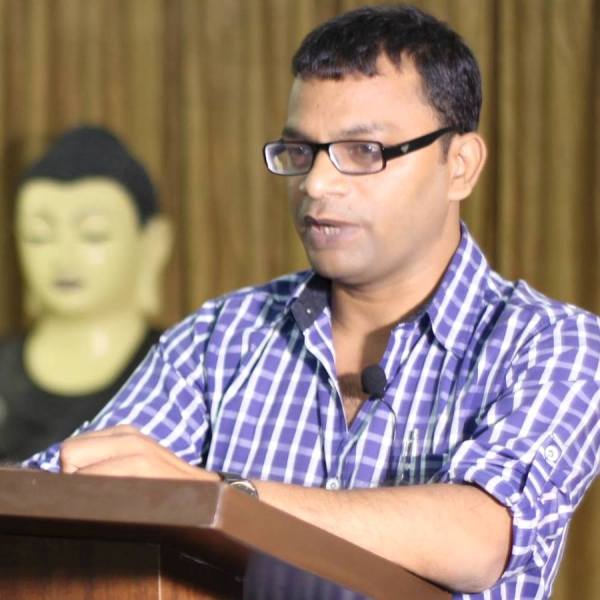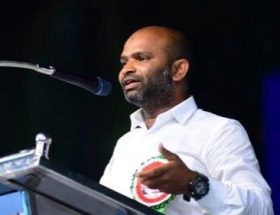Milind Thokal
Mahad, situated in Raigad district of Maharashtra, is historically significant as an ancient port city. The place achieved further importance after Dr. Babasaheb Ambedkar’s revolutionary act of defiance following the upper caste Hindus refusal to implement the resolution passed in Bombay Legislative Council. On 4th August 1923, Rao Bahadur S.K. Bole, a social reformer, proposed a resolution in the Bombay Legislative Council which said that all the public watering places, wells, dharmashalas built by public funds, public schools, courts, offices and dispensaries should be opened for all the untouchable classes without casteism. This legislation led to the foundation and breeding ground for the Mahad Satyagraha. Inn January 1924, the Mahad Municipality approved this resolution and opened the Chawdar Tank for all the untouchables. But this remained a mere gesture in that the untouchables had not exercised their right owing to the hostility of the caste Hindus. The sun of self-respect arose when Dr. Babasaheb Ambedkar with his companions went to drink the water from the Chawdar Tank of Mahad on 20th March 1927.
“It is not as if drinking the water of the Chawdar Lake will make us immortal. We have survived well enough all these days without drinking it. We are not going to the ChawdarLake merely to drink its water. We are going to the Lake to assert that we too are human beings like others. It must be clear that this meeting has been called to set up the norm of equality”
– Dr Babasaheb Ambedkar, at Mahad, 1927.
Dr. Babasaheb Ambedkar had returned from London and thereafter he had founded an institution on 20th July 1924, under the title ‘Bahishkirt Hitakarini Sabha’. Its motto was “Educate, Organise and Agitate”. Many young students were inspired by this and joined the movement under the leadership of Dr. Babasaheb Ambedkar. Its basic role was to make the untouchables aware of their rights, removing their difficulties and placing their grievances before the government. This gave a new perspective and new road map to all the deprived sections of the society who also accepted the leadership of Dr. Babasaheb Ambedkar. This led to his growing popularity among the people and the the struggle to reform and revolt against the caste Hindus began.
It was then decided by the Kolaba District Depressed Classes to hold a Conference at Mahad on 19th and 20th March 1927. The leaders of the Conference–Surendranath Tipnis, Subhedar Savadkar and Anantrao Chitre–had made all the arrangements and notified Dr. Babasaheb Ambedkar the date of the Conference. About ten thousand delegates, leaders, workers and common people from all the districts of Maharashtra and Gujarat, right from 15 to 70 years old, participated in the Conference. They traveled from different places over thousands of miles carrying their food, water and other essential things. Everything was well planned for the conference, even water was purchased for forty rupees from the caste Hindus to satisfy the needs of the attendees, as water was not available for the untouchables. Dr. Babasaheb Ambedkar, as the president of the conference, delivered his address and guided his companions. He compared the Mahad Satyagraha to the National Assembly in France convened in 1789, as Mahad Satyagraha was also inspired by the same principles: Liberty, Equality and Fraternity.
“The Conference passed resolutions on important subjects. By one resolution the Conference appealed to the Caste Hindus to help the Untouchables secure their civic rights, to employ them in services, offer food to Untouchable students, and bury their dead animals themselves. Lastly, it appealed to Government to prohibit the Untouchables by special laws from eating carrion, enforce prohibition, provide them with free and compulsory primary education, give aid to the Depressed Classes hostels and make the ‘Bole Resolution’ a living reality by enjoining upon the local bodies, if necessary, to proclaim section 144 of Indian Criminal Procedure Code at their places, for its enforcement”
– BAWS (vol.17 page 5)
After his presidential address, it was decided that every single person will assert his right to drink the water from Chawdar Tank. Dr.Babasaheb led the procession and first took the water in his palms and drank it, and all others followed his example. With this act, everyone present asserted their moral and legal right to drink water. It was a peaceful protest but very revolutionary and rebellious in its implications. After this, the upper caste Hindus spread a rumour that the untouchables were planning to enter the Veereshwar temple and hence their religion was in danger. Strangely enough, they clamoured that their God, was also in danger of being polluted. The upper caste Hindus then knocked down the attendees’ food in the dust, pounded the utensils, burnt their tents and brutally attacked the people with sticks. Many were seriously wounded. Despite this violence, Dr. Babasaheb Ambedkar told his companions not to retaliate but to maintain law and order. Tt was non-violent and constitutional protest in its true sense. With this act of resistance, he gave us the tools and methods to fight and assert our human rights in a well civilized manner.
“The water of castes.
And
The temples of castes.
How do I even call it humane.
And
How do I even say it’s God.
It’s my oppression.
It’s denial of my humanity”
Brahmins came near the Chawdar Tank and tried to purify it by drawing 108 pots of water from the Tank and then adding milk, curd, cow dung and cow urine in it, reciting mantras, offering flowers and then they declared that the water was purified. They did this just because Dr. Babasaheb Ambedkar, from an untouchable community, along with his companions drank water from the Tank. This incident shows how inhuman, barbaric, iniquitous, monstrous and gangrenous the heart of the Indian society is, which denies the very basic natural right to drink water from public places and still continues.
This whole event took a different course as the upper caste Hindus filed a case against Dr. Babasaheb citing that the Tank was their private property and later on the Civil Court of Mahad passed an order against Dr. Babasaheb and his followers from going to the Chawdar Tank. Dr. Babasaheb Ambedkar personally fought this case. He filed a writ in the court seeking the civic right to drink water for the untouchables. This took a waiting long period for justice to finally quench the thirst of the untouchables.
Further, on 25th December 1927, Dr. Babasaheb Ambedkar waged a war against very roots of the caste system, the Manusmriti in Mahad. He reduced it to ashes by burning it, with thousands of followers. This was a strong message to all the caste Hindus, Manusmriti was a symbol of inequality, injustice, cruelty and barbarism therefore burning it to flames and reducing it to ashes was the only way.
After a decade, on 17th March 1937, the court’s verdict finally went in favor of the untouchables wherein it was clearly stated that the upper caste Hindus could not prove their ownership of the Chawdar Tank and thus the legal and moral right to drink water from the Chawdar Tank was established. It was the first bloodless social revolution of its kind. In its true sense, it was a battle which adopted constitutional means and put forward the methods of non-violence.
In the he words of Dr. Babasaheb Ambedkar that “Lost rights are never regained by begging, and by appeals to the conscience of the usurpers, but by relentless struggle” have been proved by the Mahad Satyagraha.
As long as human dignity is denied, the need for Mahad grows and multiplies. Mahad lives in the present- a promising present. Whenever a human right is trampled upon, Mahad beckons. ~ Bojja Tharakam.
When we look back after 95 years of the Mahad Satyagraha, there is little that has changed. There is still the notion of purity and pollution which dominates the minds and thinking of the people even after the abolition of untouchability. I’m not going to quote any data from the government reports or NGOs or cite any events to make you sympathetic because deep down this society only knows how to enjoy untouchability. The upper caste Hindus will never come out and threaten the status quo and overthrow the whole caste structure and its privileges. Many of the so-called leaders ask for repatriation from the Britishers for the injustice meted out to the people of this country, but they will never talk about the status quo in this country that favours them. They will never say that the people who suffered for centuries at their hands should also be given repatriation. They would never want to blow up the structure which has enormously benefited them. There is a transformation in the practice of untouchability among the upper caste Hindus. Check the following table by National Campaign on Dalit Human Rights (NCDHR):

When the forms of untouchability in modern India have changed, we too need to change our perspective and fight with this evil in the best possible ways. Dr. Babasaheb Ambedkar has shown us the road map and the best example is of Mahad Satyagraha to assert our Human Personality in all walks of Life.
“My final words of advice to you are Educate, Agitate and Organize; have faith in yourself. With justice on our side I do not see how we can lose our battle. The battle to me is a matter of joy. The battle is in the fullest sense spiritual. There is nothing material or social in it. For ours is a battle not for wealth or for power. It is a battle for freedom. It is a battle for the reclamation of the human personality”.
– Dr. Babasaheb Ambedkar.
Mahad is our united Liberty
It’s a clarion call for human dignity…!
Mahad is our united Emancipation
It’s a Clarion call for Justice…!
Mahad is our united Equality
It’s a clarion call for human assertion…!
Mahad is the symbol of Life
It’s a living memory…!
Mahad is the symbol of rebellion
It’s a living realism…!
Mahad is all about Liberty, Equality and Fraternity!
Mahad is all about revolution, assertion and freedom!
Mahad is all about humanism, enlightenment and hope!
Mahad is the beginning of never-ending struggle, survival and battle to assert our Human Personality!
~
References
- Dr Babasaheb Ambedkar Writings and Speeches.
- ‘Mahad The March That’s Launched Every Day’ by Dr.BojjaTharakam.
- ‘Dr Babasaheb Ambedkar: Life and Mission’ by Dhananjay Keer
~~~
Milind Thokal completed his B.A in English Literature from SPPU, Pune. He is currently a law student at DES SNFLC, Pune.









